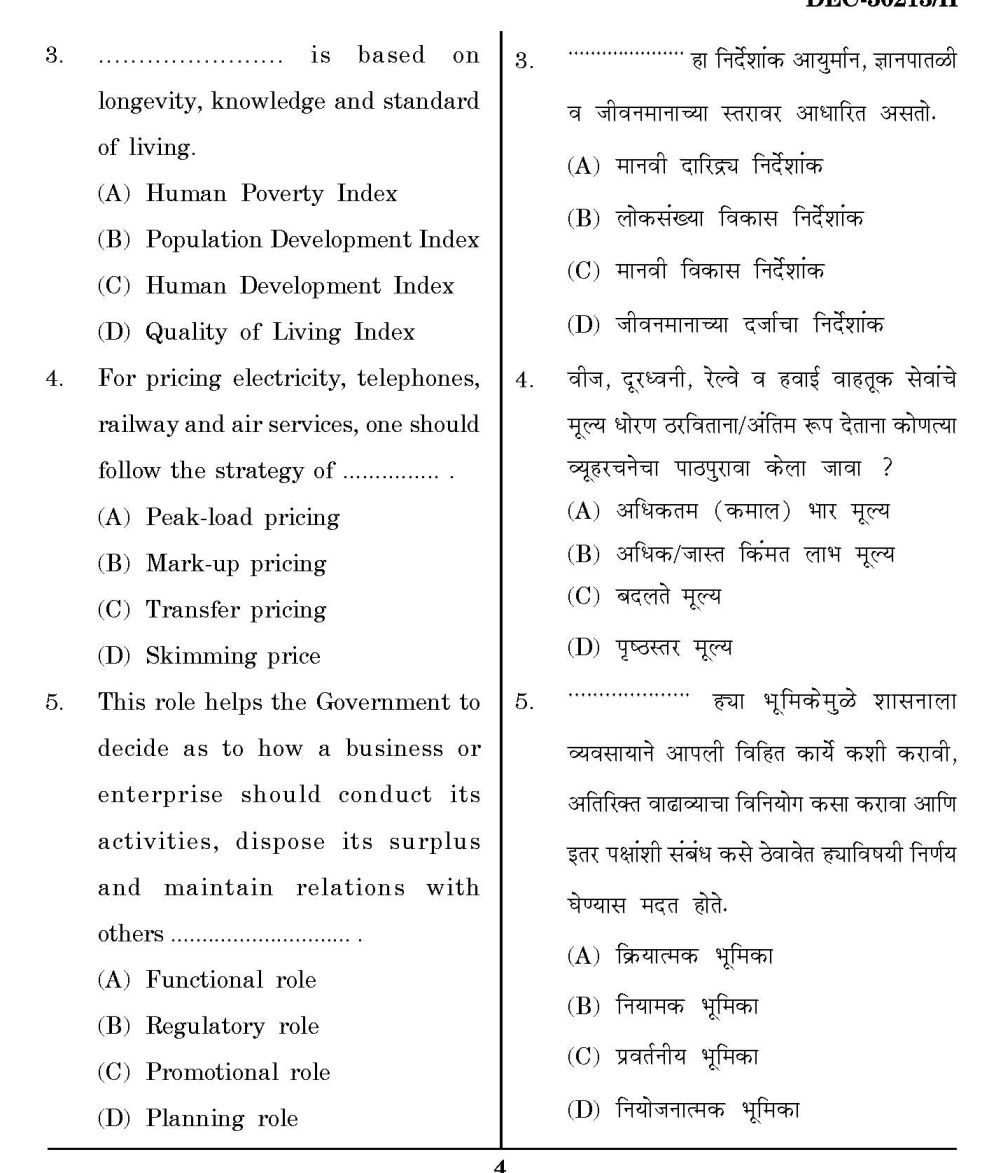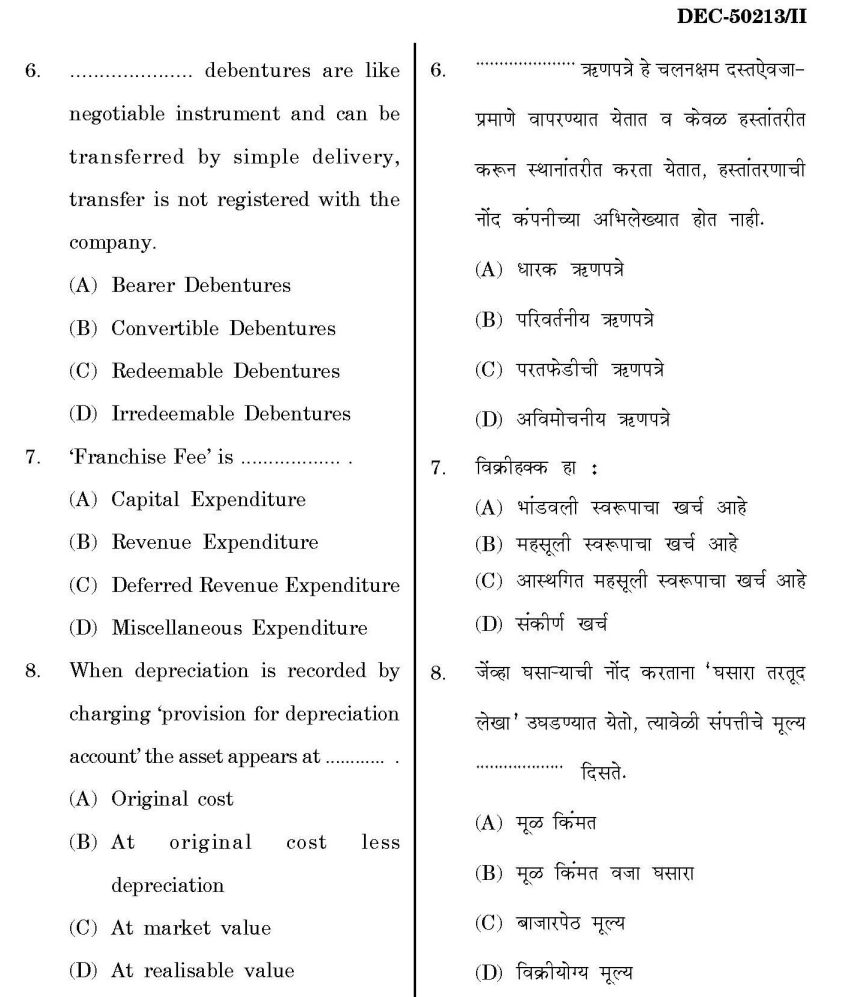|
#4
2nd September 2014, 12:47 PM
| |||
| |||
| Re: Maharashtra State Eligibility Test for Lectureship Commerce previous year questio
As you want to get the Maharashtra State Eligibility Test for Lectureship Commerce previous year question papers so here it is for you: Some content of the file has been given here: 1. Match the pairs and select the correct answer from the codes given below : List I (a) Resource availability (b) Status of technological Advancement (c) Regulatory Framework (d) Values and Ethics of People List II (i) Technological Environment (ii) Legal Environment (iii) Cultural Environment (iv) Natural Environment Codes : (a) (b) (c) (d) (A) (iv) (i) (ii) (iii) (B) (iii) (i) (iv) (ii) (C) (i) (ii) (iii) (iv) (D) (iv) (iii) (ii) (i) 2. The external stakeholders of business include : (A) Politicians, social activist, shareholders, dealers (B) Govt. organisations, NGO, Dealers and Suppliers (C) Bankers, Suppliers, Investors, Dealers (D) Dealers, Bankers, Investors, Consultants 3. Which of the following agency enables the company as well as the public to evaluate the social performance of the company ? (A) Performance Audit (B) Social Audit (C) Social Accounting (D) Social Evaluatory Audit 4. ................................. is a social movement seeking to augment the rights and powers of the buyers in relation to sellers. (A) Consumer protection (B) Consumerism (C) Consumer activism (D) Consumer empowerment 5. Which of the following is not a basic objective of a public enterprise ? (A) To redistribute of income and wealth (B) Import substitution (C) To earn return on investment of government funds (D) To protect natural and social environment 6. Which one of the following accounting treatment is correct, when old machinery is purchased for ` 76,400 and rings and pistons of the old machine were changed to get fuel efficiency, worth ` 3,600. (A) Capital expenditure ` 76,400 and Revenue Expenditure ` 3,600 (B) Capital Expenditure ` 76,400 and Deferred Revenue Expenditure ` 3,600 (C) Capital Expenditure ` 80,000 (D) Deferred Revenue Expenditure ` 80,000 7. Match the following phrases with the descriptions of the accounting processing cycle and choose the correct answer from the codes given below : List I (Phrases) (a) Transaction Analysis (b) Trial Balance (c) Financial Statement (d) Posting List II (Descriptions) (i) Income statement and position statement (ii) A chronological record is prepared that reflects the economic effects of each transaction (iii) Transfer of amount for each account affected by the transaction, results in a reclassification of the data (iv) A listing of each account and its debit or crediting ending balance Codes : (a) (b) (c) (d) (A) (iii) (iv) (ii) (i) (B) (iv) (i) (ii) (iii) (C) (iii) (i) (iv) (ii) (D) (ii) (iv) (i) (iii) 8. Responsibility Accounting is one of the basic components of a good ......................... . (A) Plan (B) Control system (C) Incentive scheme (D) Motivating instrument 9. The entity postulate ....................... . (A) refers to the name of the company required in the heading of the balance-sheet (B) refers to the owners of the entity, who must account for their interest in the entity in their personal holdings (C) indicates that the accounting unit on which the financial reports are based is the business itself, separate from its owners (D) holds that the business is made up of many separate components that are accounted for separately but reported collectively in the financial statements 8. Responsibility Accounting is one of the basic components of a good ......................... . (A) Plan (B) Control system (C) Incentive scheme (D) Motivating instrument 9. The entity postulate ....................... . (A) refers to the name of the company required in the heading of the balance-sheet (B) refers to the owners of the entity, who must account for their interest in the entity in their personal holdings (C) indicates that the accounting unit on which the financial reports are based is the business itself, separate from its owners (D) holds that the business is made up of many separate components that are accounted for separately but reported collectively in the financial statements For more detailed information I am uploading PDF files which are free to download: Maharashtra State Eligibility Test for Lectureship Commerce previous year question papers     |